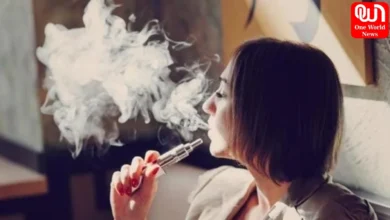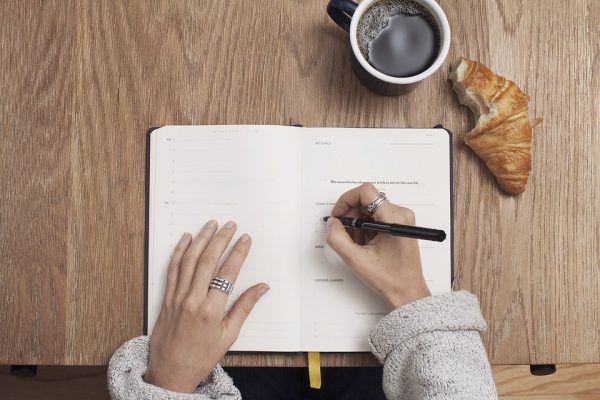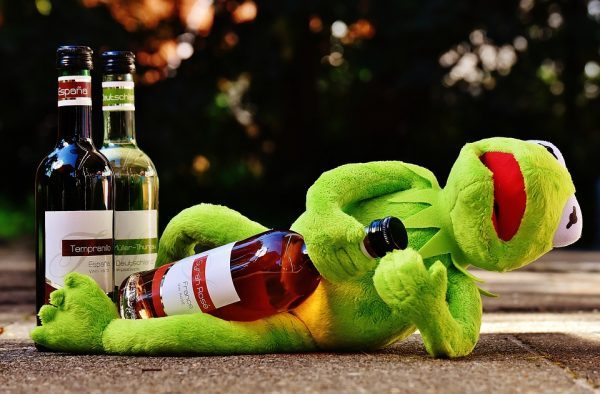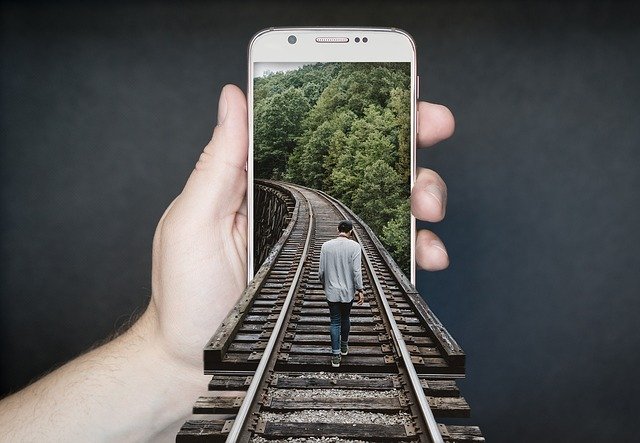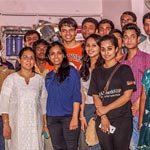
Inclusive Environmental Education
When the young shoulders of Sanskriti Bhatia, Priya Chawla and Akshat Sudheshwar started with the LEADearthSHIP Campaign, they wanted to make a change for the betterment of the society. They were set on a journey to include those who have been left behind from the environmental discourse.
Their efforts have touched more than 6000 people around the country, ranging from children to adults. Their vision is to include differently-able people in the framework of mainstream environmental education. Under the guidance of The Energy and Resources Institute (TERI) and Tetra Pak, they have interacted with visually impaired, speech and hearing impaired, physically challenged and underprivileged children.

The ‘Inclusion’ team
On 4th June, a day before the World Environment Day, the trio held a workshop with the help of Sai Swayam Society. The aim was to spread awareness about the important topics which concerned the environment and increase the participation of differently-able which would result in their inclusion in the society. The day was dedicated to water management and forestation.
“It’s important to save the environment. Tomorrow is World Environment Day and we have come here to celebrate it beforehand with these amazing students that we have. We are going to do activities that will help all of them feel connected to the environment”, says Akshat Sudheshwar. A student stands up and says which Sanskriti, who is a sign language interpreter, interprets for the others to understand, “I have often seen people cutting trees, doing wrong things with environment. We should stop those people and make them understand the importance of the surrounding environment we have.”

The plight of a farmer
Another student, with much enthusiasm, said that water is very important for everyone. Every aspect of life is related to water. Trees also need water and without it all of them will get extinct. Without trees the amount of oxygen to breathe in will not be available. It’s a domino effect. One thing leads to another. Everything is interrelated. A simple activity like closing the tap regularly while brushing, bathing or cleaning utensils will go a long way in water conservation.
After the question and answer session, the students were given the task of preparing a short story play concerning environment. The first group enacted a farmer’s plight when he is faced with a lot of difficulties due to shortage of rain. It showed how water as a resource is important for every section of the society.

The expressive eyes
The second group enacted a village which was in trouble due to littering but later came out on top as the villagers realised the drawbacks of littering and started cleaning the village. The village transformed and became clean.
It was the third group that had the best minimalistic idea. It showed how trees and water are co-dependent. It represented that a tree needs water to survive and water needs tree for its conservation. All the participants showed such great enthusiasm throughout the play. It was overwhelming.

Tree without water.
The work of these three brilliant environmentalists, along with the children of Sai Swayam Society, was commendable. Imagine the impact, if the number of differently-able people get into the mainstream society and take part in it. It could create a paradigm shift.
And we got talking with the team:
How did this project came into being? And how did you all get into the project?
We are a part of a fellowship program called LEADearthSHIP (a business sustainability youth initiative by TERI and Tetra Pak) which required us to submit a project idea.

Expectant eyes
While discussing about my fellowship with one of my friends who is hearing impaired, I realised, that for him, environment was an alien concept. Everyone should be aware of environment, it makes them feel responsible and empowered. The fellowship gave us the opportunity to implement and promote the concept of ‘Inclusive Environmental Education,’ which is very new in India.
Why is it that different people need to be a part of the main discourse in a society?
We all live on the basis of diversity! Without respecting diversity and including everyone in the society, it’s impossible to thrive further to the best of our potential. A society without diversity and inclusion will always remain incomplete.

The chief of Sai Swayam Society- Meera Bhatia
During the project too, we realised that when we did activities for a certain group of a kind of disability as compared to when we had people of all disabilities as well as able bodied people, the aspect of diversity brought such an appreciable difference in every aspect of it! This is not just theoretical but something that we have practically experienced.
What kind of chemistry do you share with the people you teach in your projects?
Before taking any workshop, we always ensure that we have a prior interactive session with the students to bring them at ease and to understand them better. This also helps us know their current level of knowledge and sensitivity towards the environment. After this we design workshops that would be most suitable and effective, based on their disability, age groups and present level of knowledge. Consequently, we end up striking a relationship with them that makes us truly value the project, since, it is the human impact and bonds that we really take back in the end.

The cloud for the day
Recalling a special case, one of our most emotional moments was when we did our first session at an NGO for very young hearing impaired children. A two and a half year old girl named Mahima was deaf and too young to understand sign language. Through pictorial and dramatic representation we tried telling her about cleanliness but weren’t sure if we succeeded in our attempt. However, at the end of the workshop, she willingly went around picking up peanut coverings that were thrown and then smiled at us. That’s when we also learnt a big lesson, which is that not every impact can be measured in numbers and surveys. Some of the most beautiful ones are the ones that are intangible.
What could be done to make the society more sensitive to issues such as this?
It is only through actual integration of people into a diverse group that the idea of an inclusive society be implemented. People need to learn to be empathetic rather than be sympathetic. Sensitivity can only be brought about by making people experience how the idea of an inclusive society is possible via participation.

Team interpreting the play
During an event called the Inclusive Sustainability Search, we paired up persons with and without disability and gave them a few tasks to be performed in teams. At the end of it when the teams came back running we realised that they didn’t really care about the prizes but were more joyous about making another friend.
And finally, what lesson have you learnt while doing the project?
All three of us come from different backgrounds and hence had different sets of learning. However, as a team we take back a lot from this project.
– As we learnt a major lesson through the session with little Mahima that it is about assessing the impact made by our efforts.
– We realised how this whole concept of ‘barriers due to disability’ are nothing but a perception we create. It was challenging but never impossible to work with this community.
– Our project was eventually recognised by the Ministry of Social Justice and Empowerment and that was a very motivating event for us. Doing something new is always a challenge but if you believe in the idea then things turn out just fine.

